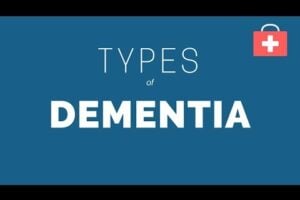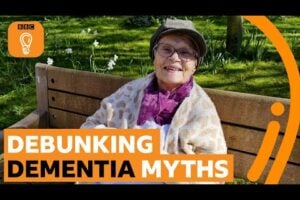 A University of Florida experiment is on its way to the International Space Station. In the weightlessness of space, it will allow scientists to control the culprit behind Alzheimer’s, amyloid fibril assembly. Learn about its promise of a dramatic breakthrough.
A University of Florida experiment is on its way to the International Space Station. In the weightlessness of space, it will allow scientists to control the culprit behind Alzheimer’s, amyloid fibril assembly. Learn about its promise of a dramatic breakthrough.
Shaohua Xu’s theory on the genesis of Alzheimer’s disease, both controversial and
praised, is a dramatic departure from conventional wisdom. Medical researchers
familiar with his work, however, believe that his hypothesis is ground-breaking.
In his research, Xu found that Alzheimer’s
begins when molecules
of a normal brain cell
protein called “tau” do something
abnormal: they
join to form
tangled fibers
that the
cell cannot
remove.
The fibers
accumulate
until
essential
substances
cannot
move
through
the cell and
the
cell dies.
In 2008, using the new technology of atomic force
microscopy, Xu observed for the first time
the actual process by which the fibers develop. Since then, he has been able to synthesize the fibers from
purified tau protein.
“It’s a three-step process,” he says. “First,
molecules of the tau protein cluster together
into spheres, each almost the same size. Next,
the spheres join in linear chains like beads on
a string. In the third stage, the beads merge
together to form a uniform filament identical
to those found in the brains of Alzheimer’s
patients.”
Advocates of Xu’s theory include KSC
physician Daniel Woodard, the first medical
doctor to review
the research. He says, “Shaohua’s theory
is revolutionary; his
evidence is overwhelming.
The medical
implications are
beyond anything in
my experience.”
NASA physician
David Tipton, chief of
the Aerospace Medicine
and Environmental Health
Branch at KSC, says, “This
could be the most important biomedical
discovery ever made at Kennedy Space Center.” Additionally, Pamela Tronetti, medical
director of the Parrish Senior Consultative
Center, predicts, “If this theory is correct, it may
well have as great an impact on neurodegenerative
disease as the discovery of germs had
on infection.”
Xu says, “The process
we have observed closely resembles that
of colloid formation. Colloids are mixtures
like milk or ink in which tiny particles are
suspended in a fluid. Our theory is based on
colloid science.”
Xu affirms that if he is on the right track, it
may be possible to halt the disease with drugs
that hinder the aggregation of the spherical
colloidal particles into linear chains. Similar
chemicals are already used to stabilize artificial
colloidal materials such as inks and paints.
Xu began developing this theory in 1997,
when he conducted Mad Cow disease research
at the University of Chicago. The research
continues to have applications for Mad Cow
disease as well as Parkinson’s disease, both of
which appear to have very similar mechanisms.
In the next phase, Xu continued his work with former
astronaut Sam Durrance,
Florida Tech professor of
physics and space sciences,
who focuses on the
biophysics aspects of the
research, and graduate
students.
Now, in 2013, Florida Institute of Technology researchers won a prestigious grant enabling the next stage of their experiment to travel on a flight to the International Space Station (ISS). Their proposal, “Self-Assembly in Biology and the Origin of Life (SABOL): A Study into Alzheimer’s,” was just one of eight proposals chosen by Space Florida and NanoRacks, LLC, in the ISS Research Competition.
The experiment will launch into space towards the International Space Station via a SpaceX Falcon 9 rocket launch from Cape Canaveral Air Force Station. Launch is currently slated for December 2013.
The principal investigators on this ISS-stage of research are former astronaut Sam Durrance and College of Engineering faculty members Daniel Kirk and Hector Gutierrez. The principal investigators will work with students, including members of the Student Rocket Society, Society of Physics Students and Students for the Exploration and Development of Space to design and develop the payload and analyze the data.
“Through our project we seek to develop an improved understanding of the origin of life on our planet, increase our understanding of Alzheimer’s disease and provide an opportunity to apply this new understanding for the betterment of humanity,” said Durrance.
Durrance leads the biological science experiment, which will investigate the spontaneous assembly of amyloid proteins into long linear fibers, as described above. In Alzheimer’s, accumulation of linear amyloid fibers composed of either Tau proteins or amyloid-β peptides have been shown to self-organize in solution through colloidal interactions.
However, the mechanisms of amyloid fiber assembly are difficult to study on Earth because the protein fibers settle, which prevents further growth. In weightlessness they should stay suspended and continue growing with multiple fibers wrapping around each other into helical fiber bundles. The analysis of these fiber bundles should provide a clearer understanding of the internal structure of the amyloid fibers.
“It isn’t clear whether amyloid deposits are the cause or a symptom of the disease, or whether they will form in vivo (in a living organism) the same way they form in vitro (in a test tube), but it is clear that a complete understanding of the colloidal formation process will greatly benefit neurodegenerative disease research,” said Durrance. The researchers believe that understanding the colloidal chemistry and biochemistry of amyloid fiber formation should lead to strategies for controlling the process.
The experiment will include about nine different incubation periods from one day to 30 days during orbit operations. When the buffer solution and protein powder are mixed and the temperature is set, it takes about a day to agglomerate into protein spheres, a few days to form fibers and a week or more to become tangling fibers, which in 30 days on Earth, would settle.
Kirk and Gutierrez are co-directors of Florida Tech’s Aerospace Systems and Propulsion (ASAP) Laboratory.
“We are thrilled to see science and engineering students working side by side to develop a unique experiment that has the potential to help us understand the origins of life and, as importantly, to make progress in combating the insidious Alzheimer’s disease,” said Kirk.
The experiment, which will be contained in a payload box unit called a NanoLab Module—a four-inch cube—can be manipulated and monitored from Florida Tech laboratories while it is in flight. “One of our challenges is to make everything very small and automated,” said Durrance.
Approximately 30 science and engineering undergraduate and graduate students are involved in various phases of the project, including an extensive educational outreach effort.
MORE INFORMATION:
About Florida Institute of Technology
Founded at the dawn of the Space Race in 1958, Florida Tech is the only independent, technological university in the Southeast. The university is designated a Tier One Best National University in U.S. News & World Report, and is one of just nine schools in Florida lauded by the 2012 Fiske Guide to Colleges and recognized by Bloomberg Businessweek as the best college for return on investment in Florida. Additional information is available online at www.fit.edu.










